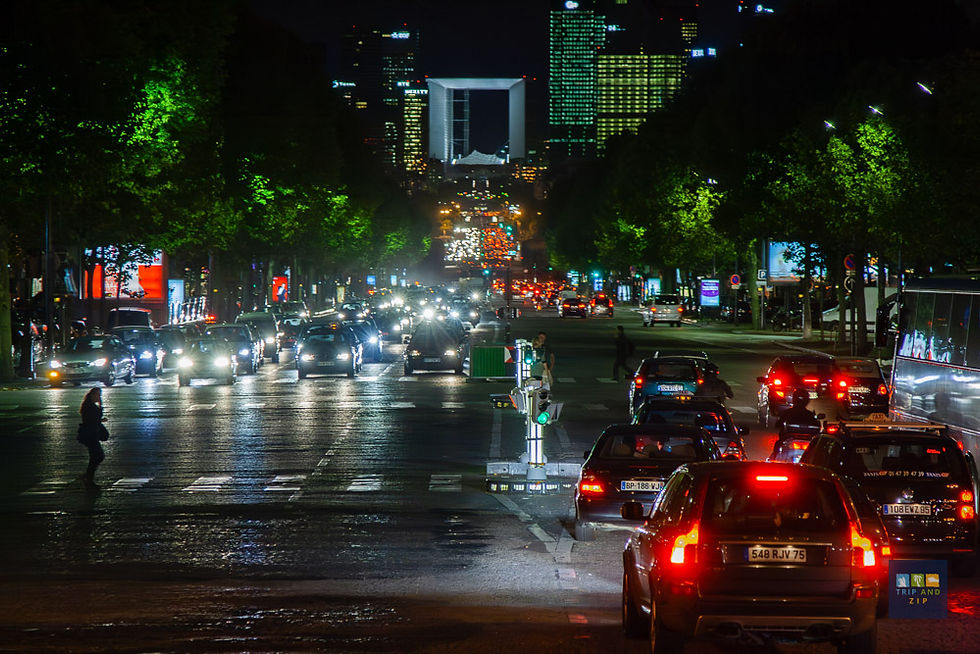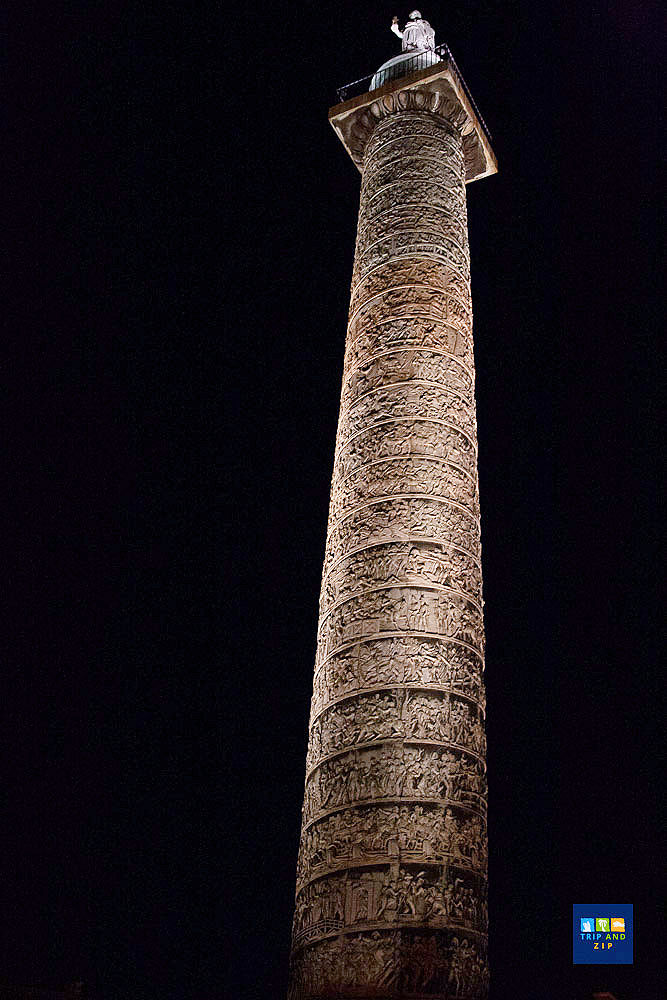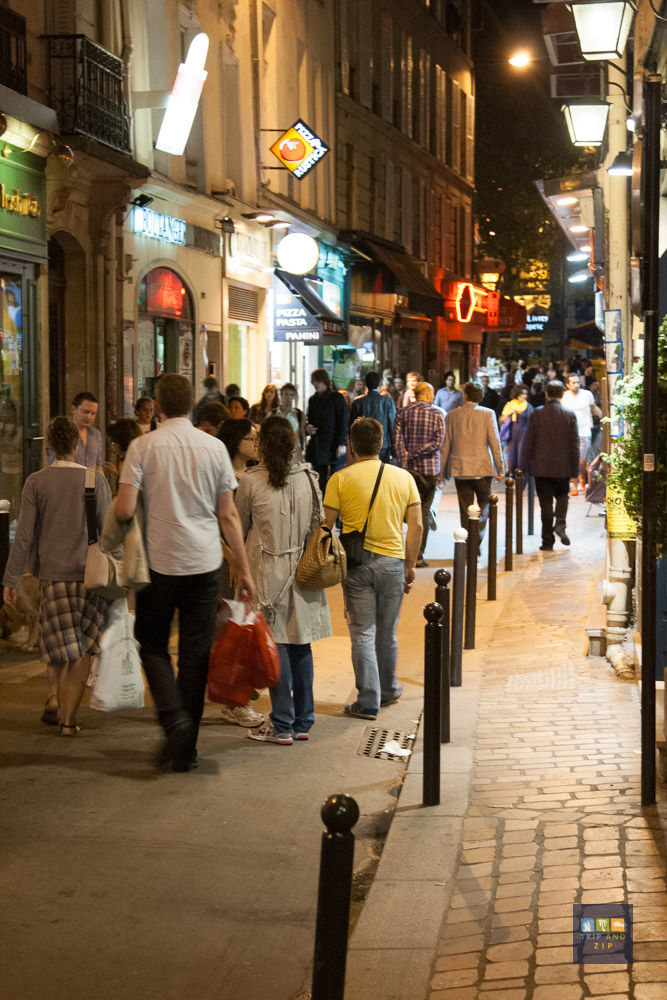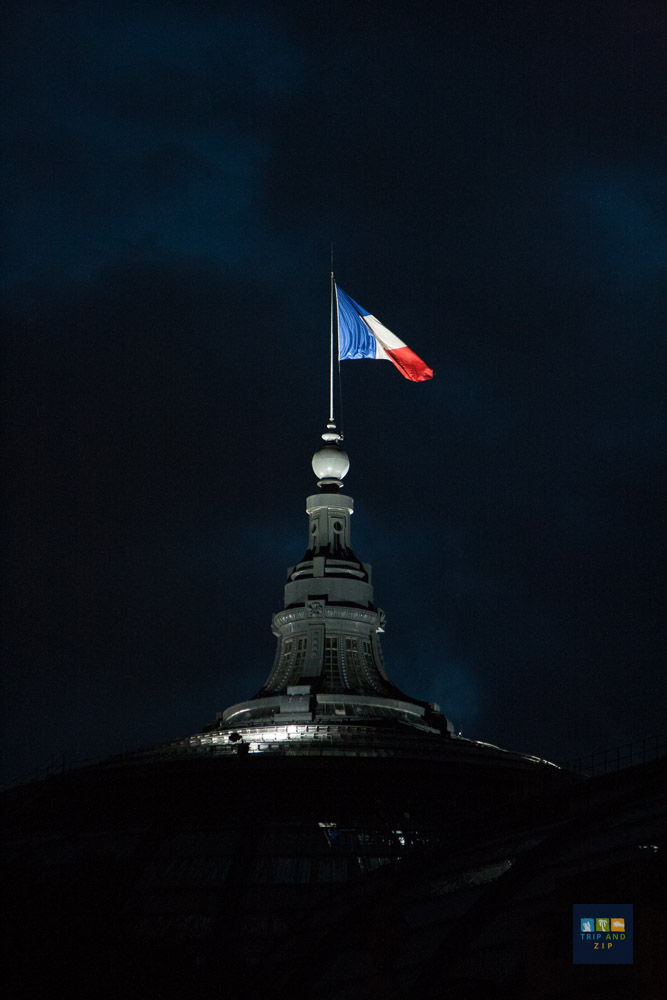The Elegance of Paris by Night
- Trip And Zip

- Sep 8, 2011
- 3 min read
Updated: Mar 15
Paris after dark reveals a different rhythm, a carefully orchestrated play of light and shadow that reshapes the city’s character. Buildings that stand proudly under the sun take on an air of mystery, softened by golden streetlights. The city's careful design becomes even more striking after dark, a masterpiece of urban planning that has remained timeless.


Few cities in the world have been as meticulously shaped as Paris. The grand avenues and perfect symmetry are no accident—they are the vision of Baron Haussmann, the ambitious 19th-century urban planner who reshaped Paris into the breathtaking capital it is today.
His reforms replaced tangled medieval streets with sweeping, tree-lined boulevards, giving Paris its unmistakable character. At night, when the streetlights cast their warm glow over the cobblestones, the beauty of this transformation becomes even more apparent.



A walk along the Champs-Élysées in the evening is an experience in itself. The boulevard, renowned for its luxury boutiques, cafés, and cultural landmarks, glows under the city lights. The polished storefronts reflect the movement of the streets, creating an almost cinematic atmosphere. At its western end, the Arc de Triomphe stands illuminated, a commanding tribute to French military victories. Whether viewed from afar or up close, the monument’s sculpted details take on new depth under the night sky.



Not far from here, Place Vendôme radiates regal beauty. The square’s symmetrical architecture, framed by grand townhouses, is centered around the Vendôme Column—a towering bronze monument forged from the melted-down cannons of Napoleon’s enemies. Spotlights illuminate its spiraling reliefs, retelling the Emperor’s triumphs in battle. Few places in Paris exude such a seamless blend of power and elegance.

Following the curve of the boulevards, the Opéra Garnier emerges in the night lights, its Beaux-Arts grandeur on full display. The façade, adorned with gilded sculptures and masterful carvings, unfolds with the grandeur of a stage set, embodying the opulence and artistry that define Paris. Whether admired from the bustling Boulevard des Capucines or its sweeping staircase, the theater itself feels like a performance—an architectural spectacle before the curtain even rises.

Further along the Seine, Les Invalides gleams under its famous golden dome, an unmistakable feature of the Parisian skyline. Originally built as a hospital for war veterans, the complex now houses museums, military relics, and most famously, the tomb of Napoleon Bonaparte.

Beneath the dome, his red quartzite sarcophagus rests in grandeur within a circular crypt designed to command admiration. Bathed in warm golden light, the entire structure feels almost theatrical—a monument befitting a leader who reshaped France, revolutionized warfare, and left an enduring mark on history.

And then, of course, there’s the Eiffel Tower. Whether viewed from the Trocadéro, a Seine river cruise, or the Champ de Mars, it remains the focal point of Paris’s nightscape. Its iron frame, a symbol of bold engineering and artistic ambition, takes on an almost ethereal presence under its thousands of twinkling lights. For a few minutes every hour, it becomes a glittering spectacle, drawing eyes from every corner of the city.
The Louvre, once a royal palace and now one of the world’s greatest museums, takes on a different energy after dark. The glass pyramid at its entrance glows in contrast to the classical façades, a modern jewel set among centuries of history. Walking through the surrounding courtyards, the usual daytime crowds disappear, and the quiet hum of the city lets the sheer scale of the palace sink in.

Across the Seine, the Latin Quarter comes alive in its own way. This is the intellectual heart of Paris, where bookshops, cafés, and historic universities keep the city’s creative spirit burning late into the night. The grand avenues give way to winding streets, where conversations spill onto terraces and the echoes of centuries-old debates seem to linger in the air.


And then, standing in timeless splendor, is Notre Dame. Lit from below, its gothic details come to life—the flying buttresses, the intricate façade, the twin towers rising over the Seine. The square in front of the cathedral, usually bustling by day, feels more solemn at night, offering a quiet moment of reflection before the grandeur of one of the world’s greatest cathedrals.

Paris after sunset is a city of contrasts—monumental yet intimate, regal yet inviting. It isn’t just a collection of landmarks but a carefully composed experience where history, art, and architecture merge seamlessly under the night sky.













Comments